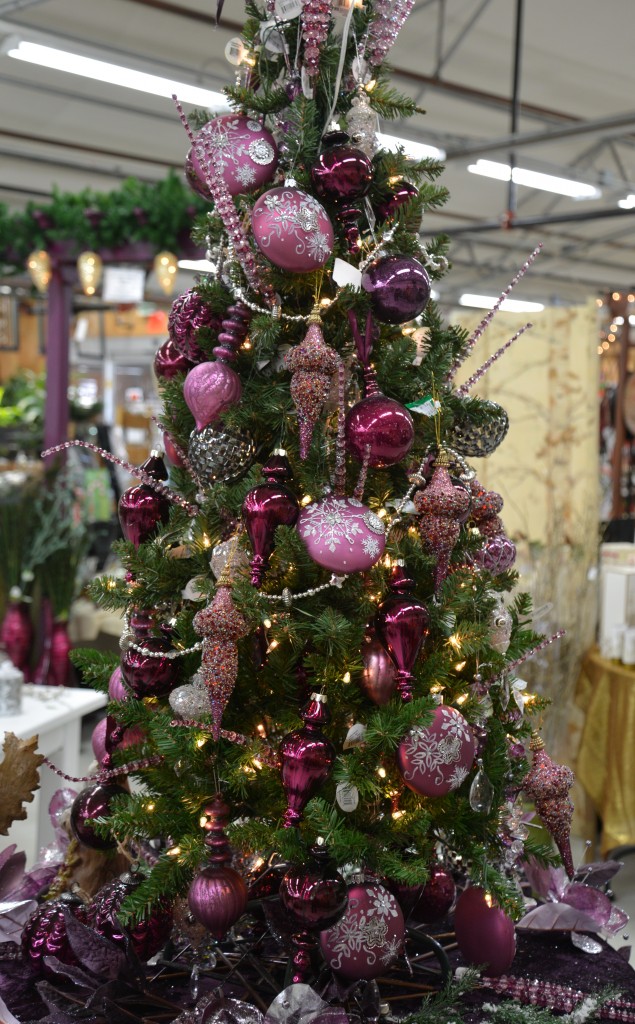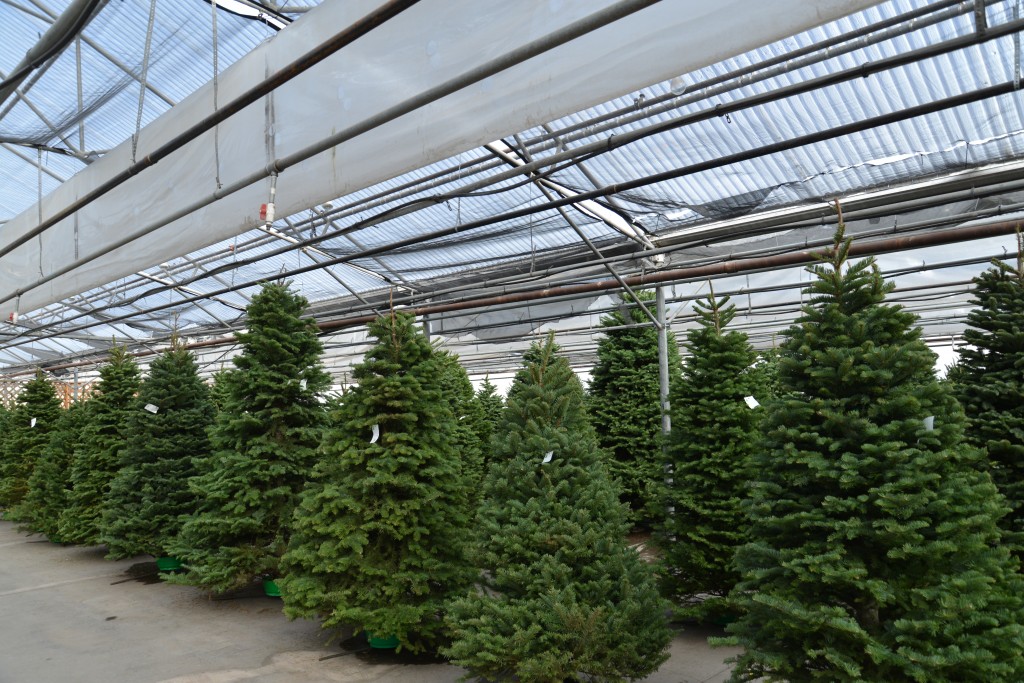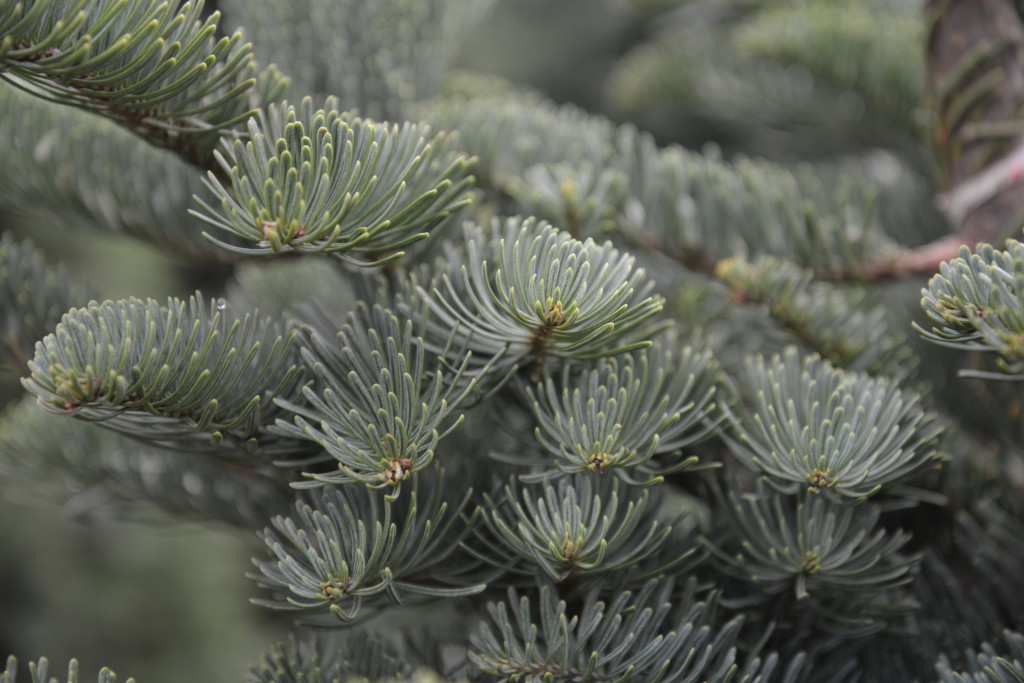The Christmas tree has been the centerpiece of the home through the holidays for several hundred years. What began in Germany in the 1500’s has evolved into a time honored tradition that has spread across the globe. Today, there are many choices available to suit most anyone’s decor and style. Typically, these choices are centered on three types of trees; permanent trees, fresh cut trees and living trees. Each has it’s benefits, so how do you choose? Here’s some of the basic information to making the most of your holiday tree.
Permanent trees require little maintenance and can be enjoyed for years. Most are hinged, making assembly a simple matter of sliding each section’s center post into the next, then fluffing out the branches. The fluffing is the key to making your tree look full and lush look. In most cases, permanent trees are pre-lit. Traditional bulbs come in both clear and assorted colors. They have a softer look than the newer LED lights. LED lights are energy efficient and long lasting, but are significantly brighter than their traditional counterparts. In both types, the lights will remain lit as long as the circuit isn’t broken. That means if one light goes out, the rest will still remain lit, unless you remove the bulb from the strand. Permanent trees can be found in an array of colors from black to red, to purple. However, most of us will choose the life-like green trees. The construction quality of permanent trees is the key to their durability and determines the years of enjoyment the tree will provide. Many newer styles incorporate injection molded branches which mimic living trees with greater accuracy. It’s a good idea to have a bulb tester handy as your tree ages. Most of them will last 10 years or longer, which means you may need to replace a bulb or two over its lifetime.
Fresh cut Christmas trees are the preferred tree for most people. Their fragrance fills our homes and delights the senses. There are quite a few types of fresh cut trees available. We stick to those we feel perform best in our dry winter climate. Fraser Fir, Noble Firs, Nordman and Douglas Fir are some of the most popular choices. Frasers and Nobles hold their needles longer and have sturdy branches to hold larger ornaments. For a little something different, try a Princess Pine.
The average humidity in Colorado homes is 30% or less. That means the needles don’t retain their moisture well. There are a few things we can do to help. First, give your tree a fresh cut, removing two inches from the bottom. then place the tree in a stand that holds adequate water. The larger the water reservoir, the less likely your tree is to run out of water and dry out. You can also apply products that reduce the transpiration rate of the needles. These are sprays like Wilt Stop and should be applied outdoors or in a garage before bringing the tree indoors to its final destination. Once your tree has a fresh cut, is in place and water fills the reservoir, allow your tree to stand for a day or so to insure it is taking up water before decorating. This is important because no one wants to remove the decorations because the tree needs another cut or isn’t taking up water. Keep water in the reservoir at all times. Once it runs dry, the tree may stop taking up water. Products like Keeps It Green can aid in the preservation of your tree through the season. Please read instructions on anything you plan to add to the water, particularly if you have young children or pets who may attempt to drink water from the stand. If you are unable to prevent them from gaining access to the stand, stick to using plain water.
Decorate your tree with lights appropriate for indoor use. Older outdoor lights are too hot and can easily result in fire. Leave your lights on only when there is someone present to monitor them. Remember to follow instructions. Most light strands will tell you not to link more than 3 strands, end to end. Safety first.
The average 6 foot tree takes about 6 years to grow. Christmas trees are grown as sustainable crops, meaning farmers replant their tree fields for future holiday’s use. If you don’t like the idea of cutting down a farmed tree, then perhaps a living Christmas tree is the choice for you.
Living Christmas trees are beautiful and can become a wonderful tradition that promotes giving back to nature. They do have some special needs in order to preserve them. Live trees aren’t meant to live in our indoor temperatures for an extended time. Keeping them indoors interrupts their winter dormancy. In order to preserve their dormant period, they shouldn’t be indoors for more than 10 days. They can be kept potted, outdoors in a protected area until the ground can be worked for planting, following their use indoors.
When trees are potted, they are no longer part of nature’s care. It’s up to you to look after them until they can be planted and become an established part of the landscape. This means you’ll need to water them when their soil dries about half the depth of the pot. Don’t fertilize them. Fertlizer stimulates growth that would be damaged in the next freeze. Larger potted trees are a bit easier to maintain, simply because the size of their pots provides greater soil volume to protect the roots from freezing. Raised above ground, there is a risk of the root system being damaged from greater exposure. It’s helpful to water them just before a freeze, as this acts as insulation to roots. Well hydrated plants are less susceptible to dehydration from winter winds and arid cold spells. Pots can be wrapped in bubble wrap to provide a barrier to the cold, as well. Remember to water them and keep them out of dry winter winds.


